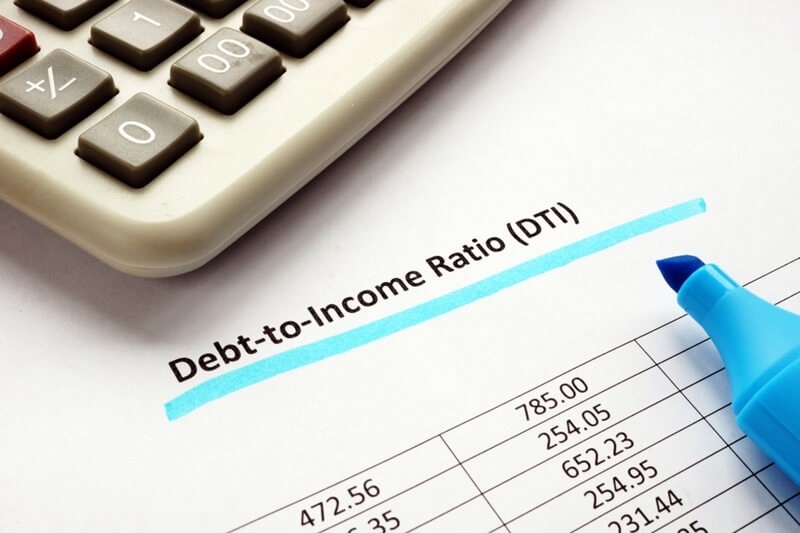
Understanding how your money flows each month is essential to maintaining stability and attaining your financial desires. One of the maximum vital but frequently omitted equipment is the debt-to-income ratio, defined in simple terms. Knowing how to calculate the debt-to-income ratio explained and knowing why debt-to-income matters, without delay affects your whole lot out of your mortgage approval possibilities in your overall financial fitness debt ratio. In this guide, we’ll destroy all of it all down in undeniable English, so that you can take charge of your price range with confidence.
When humans pay attention “debt-to-profits ratio,” it can sound technical or overwhelming. But in truth, it’s one of the easiest approaches to measure whether or not you’re living inside your manner.
Your debt-to-profits ratio (DTI) compares your overall monthly debt payments to your gross month-to-month profits (before taxes and deductions). Lenders use it as a quick picture to see how lots of your income is already going toward debt and what kind of room you have for additional financial duties.
This easy percent is vital for lenders when assessing mortgage eligibility and debt ratio, and it’s similarly essential for consumers tracking their own financial balance.

One of the most regularly asked questions is why debt-to-income ratios are inside the first vicinity. After all, as long as you’re making your bills, why must it be counted how tons income is going to debt?
Here’s why:
Banks and creditors don’t just have a look at your credit score rating. They additionally need to look at whether you realistically have enough cash left after paying money owed to cover a new mortgage or loan. A decrease financial health debt ratio means a much lower chance for them, and higher chances of acclaim for you.
Even if you do qualify, your DTI ratio may also have an effect on your mortgage phrases. Lower ratios often lead to decreased interest rates and greater favorable compensation options.
Beyond lender decisions, DTI helps you recognize whether you’re handling your money wisely. If greater than half of your earnings are going to debt, you will be at a higher risk of economic strain, leaving little room for savings, emergencies, or making an investment.
By focusing on enhancing the debt-to-profits ratio, you could grow monetary flexibility, lessen stress, and decorate long-term protection.
Learning a way to calculate debt-to-profits ratio doesn’t require a math diploma—it’s just a two-step formula:
Include:
Gross monthly earnings refer to your earnings before taxes or deductions.
Formula:
DTI=Total Monthly Debt Payments / Gross Monthly Income*100
Example:
If you pay $1,200 monthly on debts and your gross monthly income is $4,000:
DTI=1200 / 4000?×100=30%
That’s your debt-to-profits ratio defined in the most effective phrases.
Understanding your wide variety is the first step. But what does it imply?
If you locate yourself on the better quit, don’t panic. It is without a doubt manner it’s time to pay attention to improving the debt-to-profits ratio via strategic modifications.
For many customers, knowing mortgage eligibility and debt ratio is the most vital purpose to tune their DTI. Banks and mortgage lenders regularly use strict DTI thresholds when figuring out whether to approve programs.
Remember, the decrease your DTI, the more potent your monetary profile appears. It’s no longer just about approval—it’s also about securing the first-class loan phrases viable.
Even if you’re not applying for a mortgage anytime soon, your economic fitness debt ratio continues to be an invaluable tool for measuring ordinary well-being.
Think of it like a financial health rating:
As a result, the debt-to-income ratio becomes a private economic compass rather than just a lending indicator.
If your DTI is higher than you’d like, there are actionable steps you could take to improve your debt-to-income ratio over the years.
Improving this number isn’t just about mortgage eligibility and debt ratio—it’s additionally about giving yourself extra breathing room financially.
Many purchasers confuse their credit score with DTI; however, they’re not the same.
Both are remembered for lenders; however, DTI gives a forward-looking attitude in your capacity to deal with new debt. That’s why creditors often weigh each before approving loans.
When you think long-term—retirement financial savings, investments, and financial independence—your economic fitness debt ratio plays a significant role. A decrease in the DTI way:
Tracking and improving DTI is one of the smartest movements for financial planning.
“It handiest subjects if I’m shopping for a residence.”
“High income manner an excellent DTI.”
“Paying minimums is sufficient.”
The debt-to-earnings ratio explained in this guide is more than just a lender’s method—it’s a device that empowers ordinary customers to take control of their cash. By knowing how to calculate the debt-to-profits ratio, recognizing why debt-to-income matters, and mastering strategies for improving the debt-to-income ratio, you placed yourself in a more potent role for each loan eligibility and debt ratio fulfillment and long-term economic well-being.
Whether you’re shopping for a home, making use of for a car loan, or simply looking to keep your finances in check, your monetary health debt ratio is one range worth understanding, monitoring, and improving.
This content was created by AI